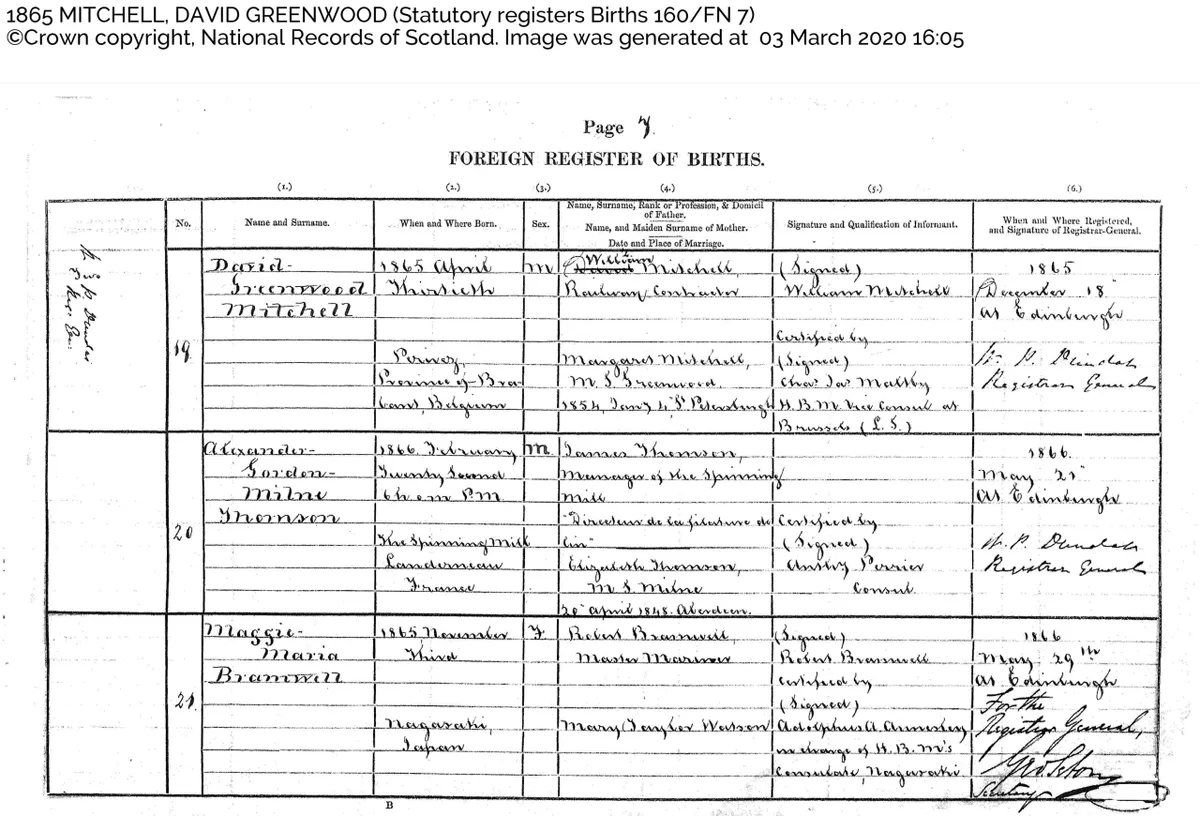The civil registration of births, marriages and deaths began in Scotland on 1 January 1855. Local registration districts were established across the country that conformed to the previous parishes of the Church of Scotland, each with a local registrar tasked with creating two sets of registers for the records.
If you have Scottish ancestry, you can search Scottish civil record birth records from 1855 on ScotlandsPeople, the Scottish government's records website. The website uses a credits system and images of Scottish birth records cost six credits each - the equivalent of £1.50. Indexes to the present day can be viewed, but there is an online closure period for access to historic images less than 100 years old, although these can be viewed at the ScotlandsPeople Centre in Edinburgh, and at satellite Local Family History Centres across Scotland.
Generally, Scottish birth records note the name of the child, its sex, the date and place of birth, the names of both parents (including the mother’s maiden name, abbreviated as “m.s.”, and any previous married surnames), and information about the informant and the registrar.
Unlike their English, Welsh and Irish equivalents, Scottish birth records also include the time of birth for every child (ie not just for twins or triplets), and – if the parents were married – the date and place of marriage. For 1855 only, further details are available: the parents’ ages and birthplaces, the number of children they already had, and how many were still alive. From 1856 to 1860, the details of the parents’ marriage were not recorded. Some overseas birth events are included among the ‘Minor Records’.

Under the registration system, Scottish births had to be recorded within three weeks, on pain of a 20s fine. They had to be reported to the registrar by an informant who was at least 14, and preferably a parent or legal guardian, the occupier of the house where the birth occurred, an authorised person from an institution, or a nurse who had been in attendance.
A copy of the birth certificate had to be issued within two days. If the birth was not registered in the required period, the parents would be prompted, but after three months it was illegal to register a birth without a warrant from the local sheriff’s office, and a £5 fine.
Before 1934, if the baby was born away from the Scottish district where the parents usually resided, its birth would be registered first in the birth district, then, within eight days, the registrar had to send a copy to the registration office of the district where the parents lived, where it was promptly re-registered. Therefore you might come across two copies of a birth record on ScotlandsPeople, within two different districts, although the information on each should be identical.
An illegitimate child could only be registered under the father’s surname if the father attended the registration alongside the mother, with both acting as informants. If he failed to appear, the child was recorded under the mother’s maiden surname, although the father’s surname could be added as a middle name. The word “illegitimate” was recorded under the name of every illegitimate child. This continued until 1919.
Stillborn children were initially not registered by law, with a child deemed stillborn if it was unable to breathe for itself following birth. On the rare occasion a child’s birth was registered but it died shortly after, both the birth and death registration were cancelled in the registers, under the sheriff’s authority. A dedicated stillbirths register was set up in 1939.
From 1864 to 1948, locally held copies of birth registers doubled as vaccination records, with the inoculation status of a child added on the left. The duplicate registers, which did not contain such details, were sent through on a regular basis to the new centralised General Register Office for Scotland in Edinburgh, the forerunner of National Records of Scotland. It is these records we can see on ScotlandsPeople. When the records were digitised, some local volumes were called in, and on these, the vaccination status can be seen.









